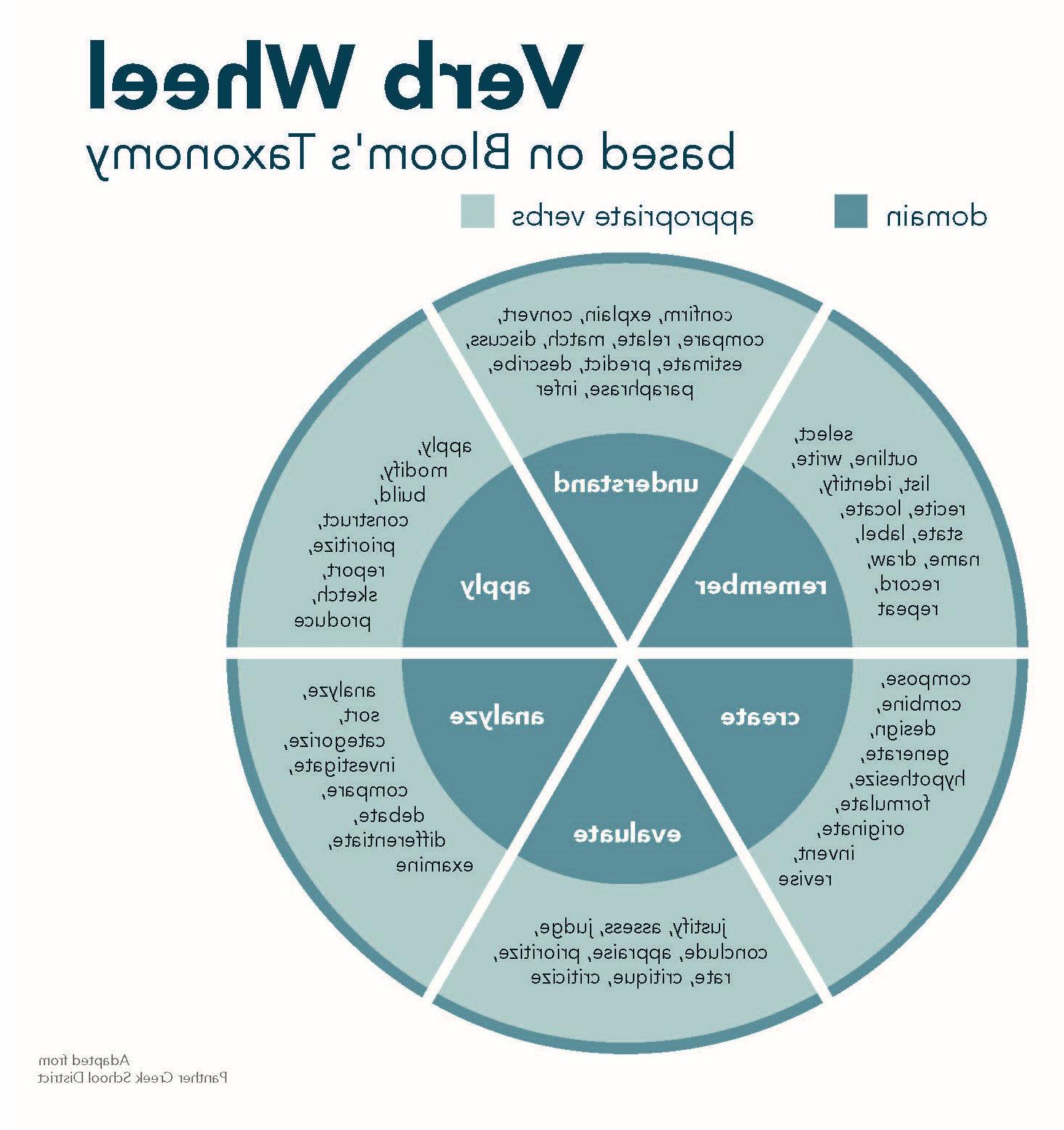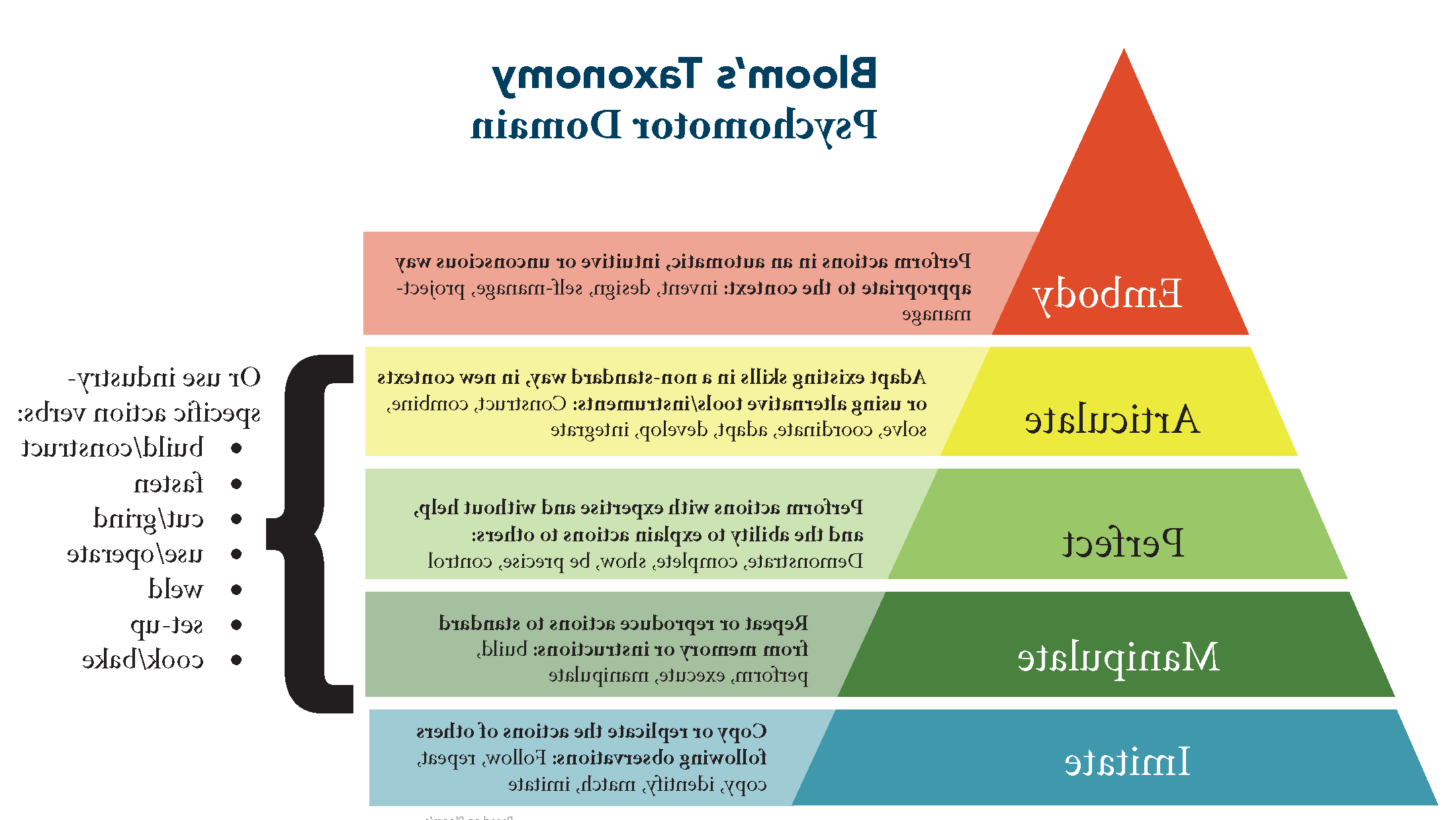Writing Learning Outcomes (LOs)
1. What are Learning Outcomes?
Learning outcomes are statements that capture the specific knowledge, skills or abilities that we intend students to learn from an activity, course, or program. They help us by providing measurable and focused targets for student learning. By starting with learning outcomes as end-points, we can better design our instruction and programming to include relevant activities, materials and assessments that all align with the end goal.
2. Narrowing down Learning Outcomes
A practical approach is to first brainstorm 5-10 things you want your students to be able to do as a result of your course, program, activity or service. Of those 5-10, try to identify the 3-6 things that are the most important. Having too many learning outcomes presents challenges in assessing all the outcomes, as well as using learning assessment data to make a reasonable number of improvements.
3. The structure of an Learning Outcome
A learning outcome contains one appropriate verb (an action) and an object (usually a noun).
- The appropriate verb refers to actions associated with the domain.
- The object describes the knowledge or ability students are expected to acquire or construct.
- It often begins with ‘Students will be able to’ or ‘Graduates will’, but you don’t need these words for course level outcomes.
In this model, based on the cognitive domain of Bloom’s Taxonomy, each section of the pie shows an example of a learning domain from ‘Remember’, the lowest, to ‘Create’, the highest, along with appropriate action verbs.

If you are creating learning outcomes in an applied trade or career field you may also need to explore what Bloom called the ‘Psychomotor Domain’. The higher levels on
this pyramid pair well with judge/evaluate/critique verbs in the cognitive domain.
For a program, you don't always need to reach the 'embody' level; set students up to master harder skills on the job. For a course, try to get up to 'manipulate' or 'perfect' level for specific skills, focusing on mastering foundational skills. Use rubrics with specific criteria to help measure a skill/action at different levels, breaking it down into parts.

Examples in Academic Affairs
- Students will be able to evaluate the credibility of a source.
- Students will be able to design a database for Human Resources use.
- Students will be able to construct a door frame according to industry standards.
Examples in Student Affairs
- Students will be able to identify resources for professional networking.
- Students will be able to reflect on the personal and social implications of their behavior.
4. Refining Learning Outcomes
It is not uncommon when creating Learning Outcomes to draft initial statements that could benefit from some revisions. Making them concise, specific and measurable can be challenging. Here are a few approaches to help with revising your outcomes, along with examples of outcomes that could benefit from revisions:
- Avoid multiple verbs and objects – choose the verb that matches the highest level of learning that students can reasonably be expected to achieve in the course/program/activity/service.
Needs revision: Students will identify possible safety hazards, use protective equipment and maintain a safe work environment. | Improved: Students will maintain a safe work environment. |
- Avoid using ‘understand’ or ‘demonstrate knowledge of’ as verbs – they are not measurable.
Needs revision: Students will demonstrate knowledge of Residence Life policies in their personal living environment. | Improved: Students will prioritize Residence Life policies in their personal living environment. |
- Use clear and learner-friendly language that students or the general public can understand.
Needs revision: Compose readable prose, as characterized by clear and careful organization, coherent paragraphs and well-constructed sentences that employ the conventions of appropriate diction. | Improved: Students will write clear and well-organized paragraphs. |
5. Assessing Learning Outcomes
Once the Learning Outcomes are written, you can start to think about how to assess them. Every outcome should be assessed in some way to measure student learning, give feedback and make improvements. The
assessment method should be appropriate to the learning outcome and level.
Contact Us
Congratulations on creating great learning outcomes! This is an important step in the design process. If you would like more help on outcomes for a course, program, or co-curricular activity, please contact us at
AEI@ngskmc-eis.net or stop by room 3110.
This work is licensed under the
Creative Commons Attribution-ShareAlike 4.0 International License.